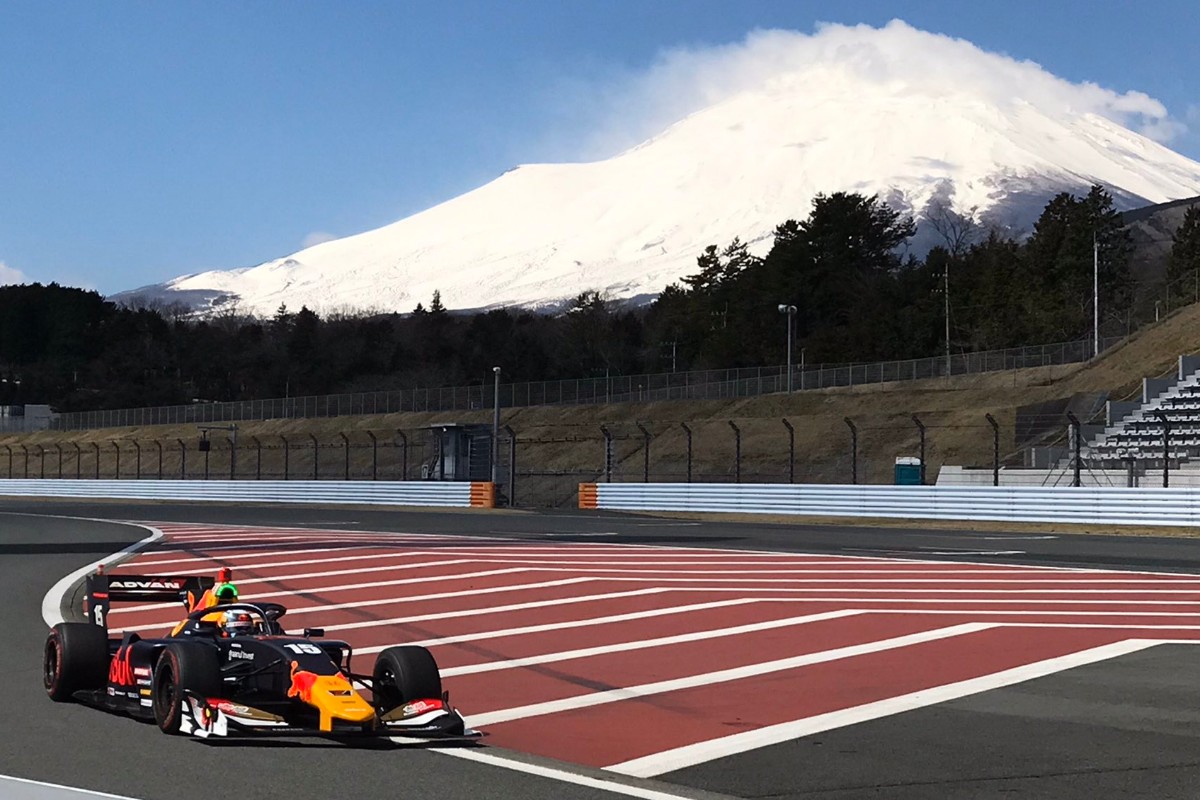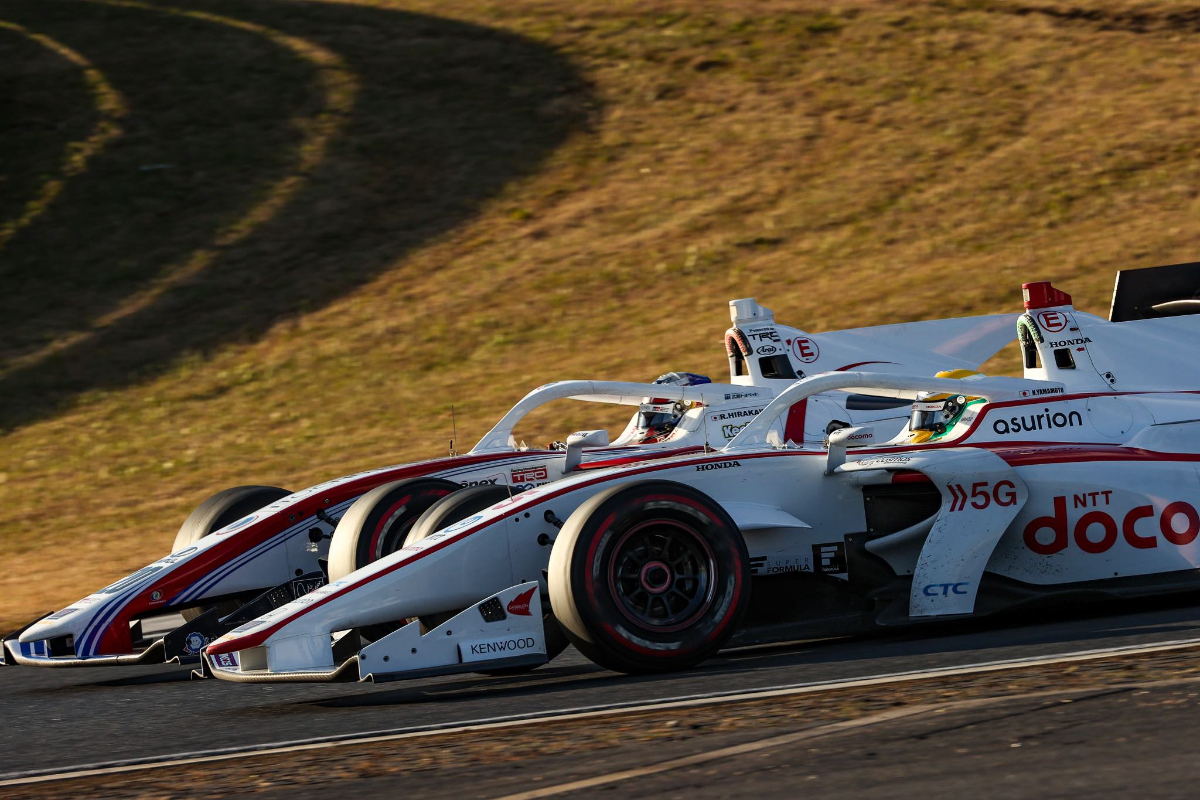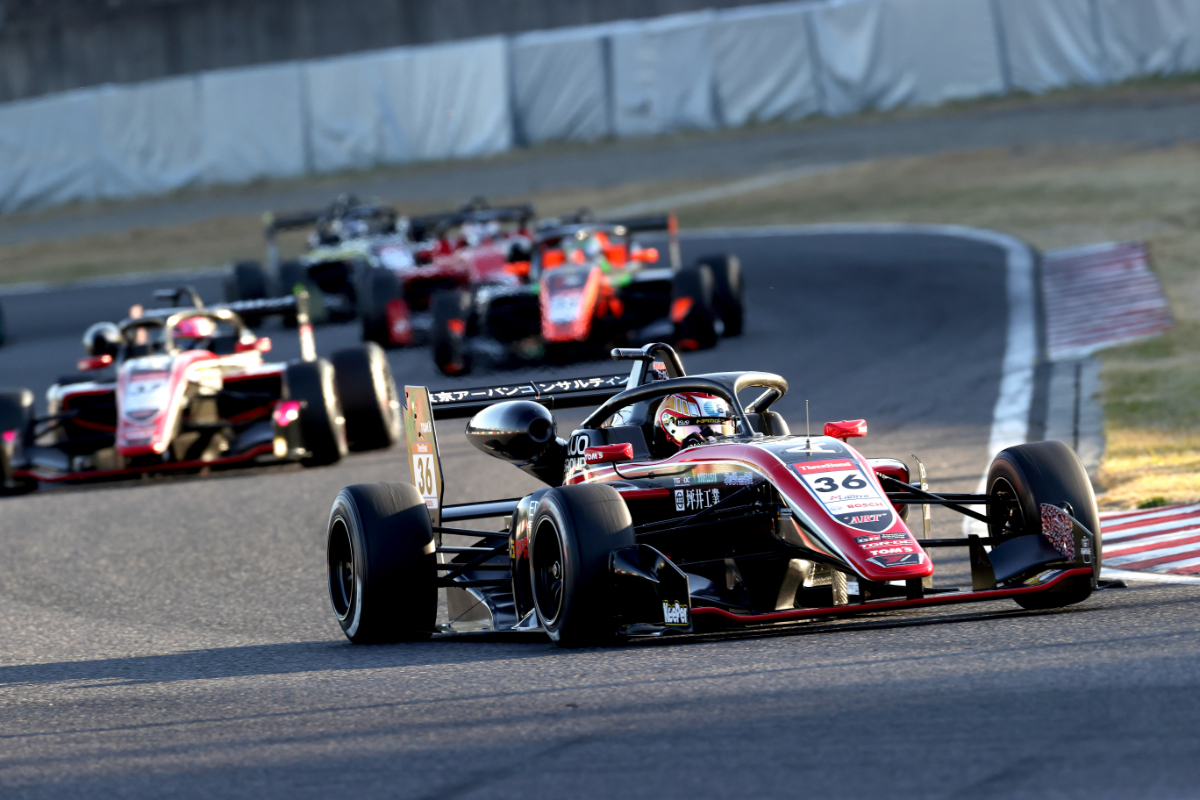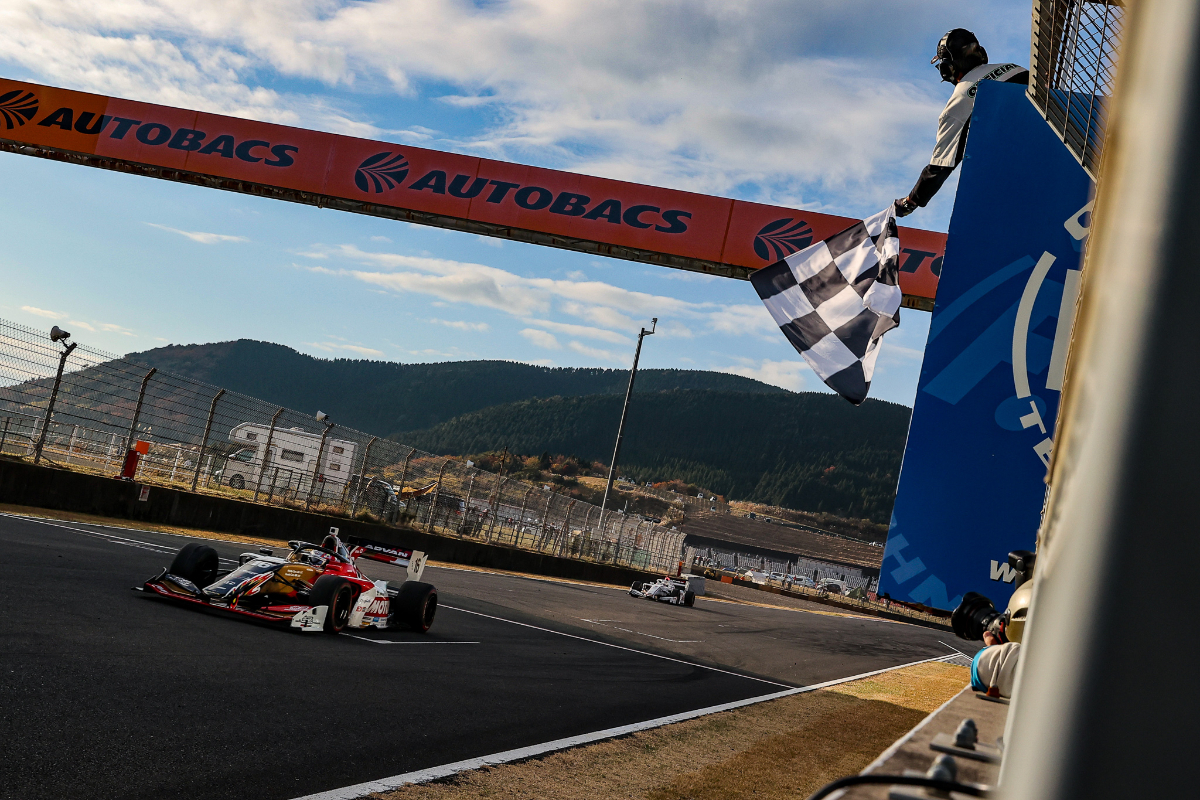
Photo: Super Formula
Formula Scout brought in full coverage of Super Formula this year as more junior single-seater graduates used the series as a way to F1. But it was series icon Naoki Yamamoto that finished first again – here’s how
The 2019 Super Formula season is probably remembered for three things, and in this order. 1) Red Bull junior Dan Ticktum’s three-race spell before he was sacked, 2) Nick Cassidy edging out Naoki Yamamoto to become champion after a year-long rivalry, and 3) Nakajima Racing become a force at the front once more after years of underachieving.
This year – the second with the halo-shod Dallara SF19 car – was expected to be similar, although the hopes were that Juri Vips would be using his time in Japan to get a Red Bull F1 seat rather than an F1 sacking, and after 2019’s star rookie Alex Palou left for IndyCar it would be Tadasuke Makino winning for the team of series legend and ex-F1 star Satoru Nakajima.
The competitive order would swing on the strengths of the Honda and Toyota powertrains too. Which was better at high-end performance, which one had better fuel consumption figures, and which one was less likely to go bang in a title run-in.
As the coronavirus pandemic swept across the globe, the pre-season predictions flew out of the window. Races were going to be shortened considerably, run without compulsory pitstops so the number of people in pitlane could be reduced – an effort to reduce the spread of COVID-19 – and each round would fit qualifying and the race in on the same day, a la Formula E.
This reduced the reliance on fuel and tyre management, one of the F1-rivalling features of the series, but also arguably meant that qualifying and the races were going to be faster than ever. Especially so now that the teams understood the car.
Travel restrictions arising from the pandemic changed the look of the grid too before the first race, with Vips absent (and ultimately never even competing this year despite making it to Japan) as well as Red Bull reserve driver Sergio Sette Camara.
 Two of the rookies hotly tipped for success, and fresh out of Formula 3 and Formula 2 respectively, were now gone, and their places were taken by two even less experienced drivers in Asian F3’s Ukyo Sasahara and Euroformula’s Teppei Natori.
Two of the rookies hotly tipped for success, and fresh out of Formula 3 and Formula 2 respectively, were now gone, and their places were taken by two even less experienced drivers in Asian F3’s Ukyo Sasahara and Euroformula’s Teppei Natori.
With the tricky strategic elements of the championship now gone, it should have made the step up for rookies easier than usual. But it then put the onus on qualifying, and getting the most out of Yokohama’s soft compound tyre (after the medium compound was dropped for this year) was not something that came naturally to everyone.
What’s more, it pushed the Honda versus Toyota battle more onto which engine was better on full power in qualifying. Was single-lap pace going to primarily dictate the title picture?
Round one at Twin Ring Motegi suggested as such, with Toyota dominating qualifying and Team Impul’s Ryo Hirakawa winning from pole. There was barely any overtaking behind, with everyone of course on the same strategy besides the very inexperienced – like Sasahara – who had to pit because they were yet to understand how to make the tyres last a whole race.
The drivers had warned the race would be a bore, and after they were proven right the series made some tweaks to the rules that brought back pitstops and more importantly resulted in the remaining six races contributing to a thrilling season.
It was the Motegi weekend that was Yamamoto’s only dud one from a personal standpoint, as he qualified 14th and finished a lowly 13th in the searing 34°C heat a weekend where his Honda power had no hope of fighting up front. His race result was down to a rare but amateur error when trying to pass KCMG’s Kamui Kobayashi, as he ended up breaking his own front wing and giving Kobayashi a puncture.
But with two dropped scores being added into the rules as a response to many drivers facing the prospect of missing two races, it wasn’t going to impact Yamamoto’s title campaign. At every other circuit he was close to his usual brilliant best.
 The breakout star of the first half of the season, while the Toyota-powered teams had a noticeable edge, was Hirakawa. After three races he had a staggering 15-point lead, following up his Motegi win with another pole at Okayama and a fourth place finish, then a straight run to second at Sportsland SUGO after being leapfrogged by late-stopper Cassidy.
The breakout star of the first half of the season, while the Toyota-powered teams had a noticeable edge, was Hirakawa. After three races he had a staggering 15-point lead, following up his Motegi win with another pole at Okayama and a fourth place finish, then a straight run to second at Sportsland SUGO after being leapfrogged by late-stopper Cassidy.
It was Cassidy’s uncanny ability to make the tyres last the race duration, and getting more pace out of them beyond the point most drivers would be losing time by choosing not to pit, that kept him in title contention when his TOM’S team didn’t have the pace to fight for poles and therefore have a straightforward route to wins.
The only race in which he couldn’t play that card was obviously Motegi, but he used it as often as he could.
He pitted from the lead with two laps to go at Okayama, under the safety car in the first half of the Sugo race while already in the podium positions after qualifying fourth, and with four laps to go at Autopolis. Then in the first Suzuka race he and half of the field pitted in response to leader Yamamoto coming to a stop on track with engine issues, under the expectation that the safety car would come out at any moment. Suzuka’s second race was his to win before an engine failure, which required an older unit to go in for the Fuji Speedway finale. Once again, he took his tyres as long as possible there too.
This time his pitstop came after other title rival Tomoki Nojiri came to a stop on track with a wheel-related problem, and Cassidy sacrificed a half-minute lead to pit before a potential safety car wiped out that advantage anyway. He returned to track between Yamamoto and Hirakawa, and after his new set of tyres warmed up – on a track barely at 10°C surface temperature – he set off in pursuit of Yamamoto.
Once he caught up they engaged in a thrilling and potentially title-deciding battle – one they probably wouldn’t be allowed to get away with if they were racing in Europe such was it closeness and ferocity – and after clearing his rival Cassidy went pursuing the very close top three.
 Had the race run one or two laps longer, Cassidy could very well have passed all three to win the race and the title. He didn’t manage it, but once again reminded the world of his brilliance and how entertaining Super Formula can be in the process.
Had the race run one or two laps longer, Cassidy could very well have passed all three to win the race and the title. He didn’t manage it, but once again reminded the world of his brilliance and how entertaining Super Formula can be in the process.
Yamamoto held off Hirakawa to finish fifth, and claim his third title as a result. He is now the fourth driver to reach that milestone, after six-time champion and Impul boss Kazuyoshi Hoshino, five-time champion Nakajima and four-time champion Satoshi Motoyama, who was B-MAX’s team boss this year and also cameoed in Super Formula Lights.
The drivers contending for victory just two seconds up the road from Cassidy at Fuji were INGING’s Sho Tsuboi and Nakajima’s Toshiki Oyu.
Both drivers had a habit this year of finishing at the back or not at all, but the SF Lights graduates showed that the future of the championship is in safe hands with their breakthrough wins.
Tsuboi, who dominated the 2018 SF Lights season, usually struggled in qualifying – a carryover from his rookie season last year. When he did start near the front he had impressive race management skills though, and won at Autopolis from eighth on the grid before benefitting from Nojiri’s woes to add a second success at Fuji – the only driver to win twice this season.
Oyu was practically the opposite, with stunning single-lap speed that had him on average as the third best qualifier (behind only Yamamoto and TOM’S driver Kazuki Nakajima), but an inability to put things together in races. The rookie frequently crashed at first, but under the gaze of Takuma Sato at Suzuka – where he coaches at the racing school presided over by the two-time Indianapolis 500 winner – he went from zero to hero by winning race two after Cassidy’s engine failure.
The confidence boost from that drive, which has gone some way to ensuring Honda gives him a second season in the series, continued on to Fuji and he fought Tsuboi wheel-to-wheel for the win before settling for second. As a result he leapt up to sixth in the points, while Tsuboi came third ahead of Cassidy courtesy of the 2020 dropped scores rule.
 Oyu’s team-mate Makino missed Fuji due to meningitis and came 12th in the points, one place up on Kondo Racing’s Sacha Fenestraz. The reigning SF Lights champion started his rookie season in incredible style by qualifying second and finishing third, but he was then involved in several crashes – at least one which Oyu was firmly to blame for – and he only completed five laps in the next three races. He was out after one lap again at Suzuka, but when he could finish he always scored and with impressive pace despite Kondo’s slide down the order. Fenestraz should probably have been top rookie.
Oyu’s team-mate Makino missed Fuji due to meningitis and came 12th in the points, one place up on Kondo Racing’s Sacha Fenestraz. The reigning SF Lights champion started his rookie season in incredible style by qualifying second and finishing third, but he was then involved in several crashes – at least one which Oyu was firmly to blame for – and he only completed five laps in the next three races. He was out after one lap again at Suzuka, but when he could finish he always scored and with impressive pace despite Kondo’s slide down the order. Fenestraz should probably have been top rookie.
Nobuharu Matsushita’s mid-season switch to SF boosted his confidence after the abrupt end to his F2 career, and he made the podium for the first time at Fuji after spending the whole race in what ended up being the lead trio. Old F2 rival Sette Camara eventually made his debut with B-MAX at Sugo and took pole after crashing in free practice. He was on for at least a podium in the race before also crashing straight after his pitstop, an embarrassing error more common than you think in Super Formula as tyre warmers were banned until the end of this season when temperatures nearly dropped to freezing.
Perhaps the most impressive young driver though was Ritomo Miyata. He entered two races as a substitute for Nakajima at TOM’S, and qualified second for the first of those at Okayama. A slow start and Oyu’s race-ending incident with Fenestraz occurring in front of him on the opening lap consigned him to a midfield finish, but ninth place was still impressive given he was also racing in SF Lights that weekend. He qualified seventh and finished eighth on his Autopolis return.
Miyata’s third season in SF Lights resulted in the title as expected, winning 10 of the 14 races. Most of the time he was just unbeatable in racing conditions, although B-MAX’s Sena Sakaguchi could match him in qualifying in the new Dallara 320, and the only blot on his record was an unforced error at Suzuka where he spun away a win and a 100% run of podiums.
There was little overtaking with the new F3-level car, and Miyata’s TOM’S team-mate Kazuto Kotaka picking up third in the points and a win at the Fuji season finale was an example of that as he simply drove around in front of his rivals knowing the dirty air he was creating was doing the defensive job for him.
 Natori’s planned SF debut was called off by dehydration worries, and his time with Toda Racing in SF Lights wasn’t great either besides one pole and a couple of podiums. The international flavour of the grid was reduced to just Albirex Racing’s Lucca Allen, the reigning Formula 4 South East Asia champion, as travel restrictions prevented others from making the trip.
Natori’s planned SF debut was called off by dehydration worries, and his time with Toda Racing in SF Lights wasn’t great either besides one pole and a couple of podiums. The international flavour of the grid was reduced to just Albirex Racing’s Lucca Allen, the reigning Formula 4 South East Asia champion, as travel restrictions prevented others from making the trip.
Formula Scout’s Top 5 Super Formula drivers
Key Percentage of team’s points scored (TP), Average qualifying position (QA), Average points per race (AP)
5. Kenta Yamashita JAPAN Kondo Racing
7th in standings, 34 points (1 podium) – TP 65%, QA 11.8, AP 5.7
Never spectacular, but probably the most mistake-free driver in the field in his fourth season at this level. Yamashita started the season on a high with a second place, and only made the top five once after that but in wake of Toyota’s early-season advantage disappearing and Kondo sliding down the competitive order. Along with Cassidy and Nojiri he was the only driver to score in six of the seven races, and that came after missing Okayama – when Kondo was still near the top – due to being in quarantine after the Le Mans 24 Hours.
4. Tomoki Nojiri JAPAN Team Mugen
5th in standings, 47 points (1 win, 2 poles, 1 podium) – TP 91%, QA 7.3, AP 6.1
Mugen hasn’t operationally been the tightest team since the Dallara SF19’s introduction, and team boss Shinji Nakano will admit that. Despite those issues, including slow pitstops once they were reintroduced, Nojiri put in not only his best individual race performances to date but also his most complete season. A warm-up issue at Suzuka led to him stalling on the formation lap and requiring him to start at the back rather than from second place, while the pitstop and then a secondary wheel problem undid his Fuji victory hopes from pole. He did win Autopolis from the front, but the points lost through no fault of his own prevented title success.
 3. Ryo Hirakawa JAPAN Team Impul
3. Ryo Hirakawa JAPAN Team Impul
2nd in standings, 60 points (1 win, 2 poles, 2 podiums) – TP 78%, QA 9.3, AP 7.4
At first, it looked like Hirakawa would romp to the title in a way rarely seen in SF. In reality, he was dealt another gut-wrenching title loss after finishing second in Japan’s Super GT sportscar series for the last three seasons – most often to none other than Yamamoto. The undoing of his season wasn’t really Hirakawa’s fault though, with technical issues putting him at the back of the grid more than once. He wasn’t able to turn being on the back foot into a solid haul of points like his main rivals could, and as a result his impressive end of season wasn’t enough to beat Yamashita.
2. Nick Cassidy NEW ZEALAND TOM’S
4th in standings, 50 points (1 win, 1 pole, 2 fastest laps, 2 podiums) – TP 64%, QA 9.3, AP 7.7
At first it didn’t look like Cassidy would race this year, with his attention already being piqued by challenges beyond Japan, but the lengthy lockdown period gave him time to focus on defending his title. His race pace and racecraft was simply sublime, putting in drives that no one else looked capable of other than Yamamoto, and his mastery of the soft compound tyre also went beyond expectations. He did take one pole, but otherwise didn’t have the key to unlocking the qualifying pace in his TOM’S-run car much of the time and that’s what cost him the title.
1. Naoki Yamamoto JAPAN Dandelion Racing
1st in standings, 62 points (1 win, 1 pole, 2 fastest laps, 3 podiums) – TP 67%, QA 6.0, AP 8.1
There are a lot of people who would love to see what Yamamoto would be capable of in F1, and after a season like this one it’s easy to see why. His understanding of what the tyres wanted from the driver straight out of the box was key to his qualifying form – the best of anyone’s besides the cameoing Sette Camara and Miyata – and he had more strategic manoeuvrability than his rivals courtesy of his ability of saving the best of his tyres until he had fresh air in front of him in races. His respectful yet intense rivalry with Cassidy, and Hirakawa, continued with some thrilling wheel-to-wheel battles that were always clean and usually involved Yamamoto coming out on top.
Further reading
How “worried” Nakajima had his faith in Oyu rewarded
10 outstanding Japanese drivers who never reached F1
What is Super Formula?